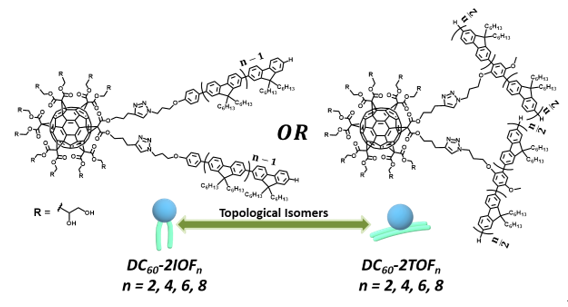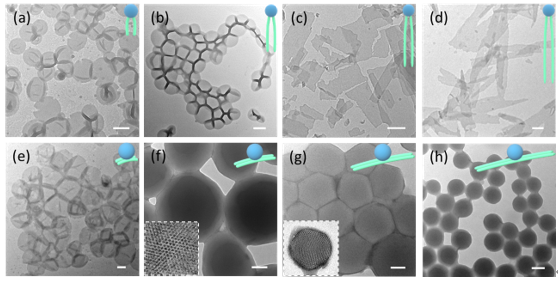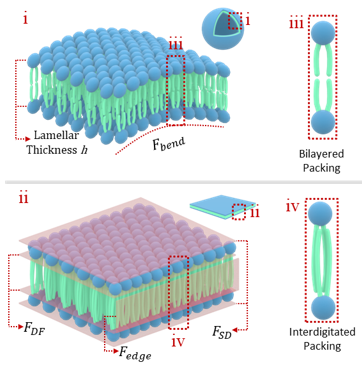For decades, researchers have made great efforts toreplicate, modify, and improve the properties and functionsof living biological membranes.One significant advance isadopting the “scale-up” strategies by using magnified analogues of natural lipids (like amphiphilic block copolymers,Janus dendrimers,giantsurfactants,proteins,colloidal particles, etc.) to generate liposome-like nanostructures. Though chosen by nature, lipid-type geometry itself, with one head and two extended tails, has rarely been studied in a magnified size, which necessitates the design and investigation of a prototype system.

Figure 1. Chemical structures of I- and T-shaped molecules.
Recently, Prof. Stephen Z. D. Cheng’s group from South China Advanced Institute for Soft Matter Science and Technology studied the self-assembly behaviors of a series of giant lipid-like molecules from thermodynamic and geometric perspective. These giant lipids were synthesized through precise chemical modification of hydrophilic C60 derivatives and hydrophobic oligofluorene units (Figure 1.). Giant lipids recast the head-tail configuration, precise chemical structures and minor chain interpenetration in natural lipids. These features are rarely constructed in traditional macromolecules.

Figure 2. Bright-field TEM images of self-assembled I- and T-shaped molecules in solution. Molecular models with corresponding geometric parameters are illustrated at top-right. Scale bar: (a~e) 200nm, (f~h) 50 nm.
Researchers classified these giant lipids into I- and T-shapes corresponding to the natural lipids with double tails and branched tails, respectively. In I-shaped series, the number of fluorene units modulates the head-tail ratio. In T-shaped series, the number of fluorene units modulates the cross-sectional areas between hydrophobic and hydrophilic parts. Due to the molecular rigidity and precise structure, all geometric parameters are calculated quantitatively. The morphological transition from bilayered vesicles to interdigitated nanosheets was observed in I-shaped series. The transition from vesicles into hexagonally arranged colloids was observed in T-shaped series. The mesophase behavior differs significantly by modifying the molecular architecture.

Figure 3. The free energy of curved bilayered structure and flat interdigitated nanosheets.
In addition, researchers discussed the self-assembly process in two aspects. From a geometric perspective, the connection mode between hydrophilic and hydrophobic parts largely determines the packing parameters. The increasing rate of packing parameters increases much faster than that of I-shaped molecules. On the other hand, the balance between bending free energy and edge energy determine the morphologies of self-assembled structure in I-shaped series. For T-shaped molecules mismatching region originated from surface curvature destabilized the system, which further eliminates the inner surface and induce internal phase separation.
This work is published in Angew. Chem. Int. Ed. Recently. The first author is Xiao-Yun Yan, and the corresponding authors are Dr. Stephen Z.D. Cheng and Dr. Zhiwei Lin.
Magnifying the Structural Components of Biomembranes: A Prototype for the Study of the Self‐Assembly of Giant Lipids
Xiao-Yun Yan, Dr. Zhiwei Lin*, Prof. Wei Zhang, Hui Xu, Qing-Yun Guo, Yuchu Liu, Jiancheng Luo, Xian-You Liu, Prof. Rongchun Zhang, Jiahao Huang, Tong Liu, Zebin Su, Ruimeng Zhang, Shuailin Zhang, Prof. Tianbo Liu, Prof. Stephen Z. D. Cheng*
DOI: 10.1002/anie.201916149
https://onlinelibrary.wiley.com/doi/full/10.1002/anie.201916149
